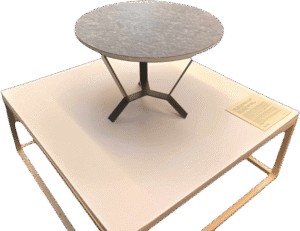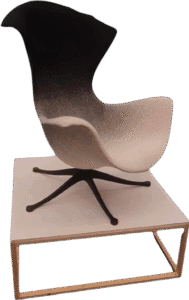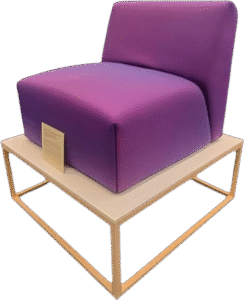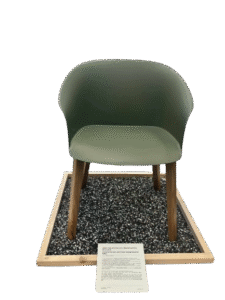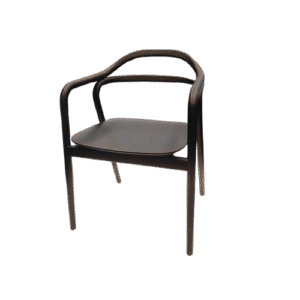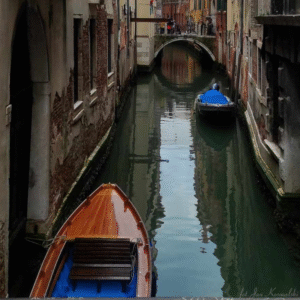1.How Italian Design Leads the Way in Sustainable Living
2.Visiting Cluster FVG and the Innovation Platform: Learning about Eco-Design and Sustainable Materials
3.An Introduction to the Circular Economy in the Furniture Industry
4.How Italy Promotes Sustainable Living through Green Architecture
5.Reflections: Applying These Practices in the Polish Context
How Italian Design Leads the Way in Sustainable Living
Italy is one of the leaders in sustainable construction, with a high number of buildings certified under LEED (Leadership in Energy and Environmental Design). Italian furniture brands are implementing eco-design principles, creating fully sustainable products. Italian fashion blends luxury with environmental responsibility, producing clothing from vegan leather and recycled materials. Ferrari is investing in modern, eco-friendly factories, while events like Italian Design Day highlight the commitment of Italian brands to sustainable development.
Riva 1920 uses wood reclaimed from old buildings or furniture that can be repurposed. Italian furniture companies embrace eco-design by using renewable materials and minimizing waste.
Electronic waste: Formafantasma, a studio founded by Italian designers, transforms e-waste into innovative furniture designs, emphasizing the need for responsible resource management.
Waste sorting: In Italy, waste separation is mandatory, and improper handling can result in fines.
💡Fun Fact:

What about plastics from bottles?
In Italy, there are reverse vending machines for recycling, often called "bottle machines." They operate by accepting empty plastic bottles and aluminum cans in exchange for a deposit refund.
A visit to the FVG Cluster and Innovation Platform – learning about eco-design and sustainable materials.
Italian design combines tradition with modern ideas to create things that are both beautiful and good for the planet. Designers use natural materials, new technologies, and local production to reduce pollution and lower energy consumption. Italian cities organize fairs and exhibitions to promote eco-friendly solutions in design. An important element of the Italian approach is respect for objects and their history, leading to products that are easy to repair and made from reused materials.
The Friuli Venezia Giulia region is an example of how to create beautiful things without harming nature, combining tradition with modern, ecological ideas.
The cluster represents a public-private partnership structure that works for the economic, cultural, and social development of the cultural and creative industries. By cooperating with the cultural and creative sectors, it helps develop the production chain, contributing to the region’s growth.
Maritime Technology Cluster FVG (mareFVG) is a public-private partnership that brings together companies, research institutions, and public administration to promote innovation in the maritime sector.
The FVG Cluster is a regional initiative in northeastern Italy, in the Friuli Venezia Giulia region, focused on supporting innovation, cooperation, and economic development across various sectors. Several industrial clusters operate in the FVG region, each focusing on a specific industry. Here are some of them:
Maritime Technology Cluster FVG
Also known as mareFVG, this maritime technology cluster is based in Monfalcone. It is a public-private partnership connecting companies, research institutions, and public authorities to promote innovation in the maritime sector. The cluster supports R&D projects, organizes vocational training, and analyzes labor market and innovation needs in the maritime sector. It also serves as a platform connecting businesses with potential partners from other regions and countries.Wood Furniture Home Cluster FVG
This cluster focuses on the furniture and interior design sector. Its goals include supporting innovation, promoting sustainable development, and assisting small and medium-sized enterprises (SMEs) in digitalization and ecological transformation processes. The cluster participates in European projects such as Supporting recovery and business transformation of lighting & furniture SMEs for the Europe Industry of Tomorrow, which offer financial support for SMEs to implement advanced technologies and circular solutions.Cluster Scienze della Vita del Friuli Venezia Giulia
The Life Sciences Cluster FVG focuses on the life sciences sector, including biotechnology, pharmaceuticals, and medical technologies. Its aim is to promote cooperation between research institutions, companies, and public organizations to foster innovation and economic development in the region. The cluster supports startups, facilitates access to funding, organizes mentoring programs, and promotes technology transfer and international cooperation.
The FVG clusters play a key role in the economic development of the Friuli Venezia Giulia region by supporting innovation, cross-sector cooperation, and skills development across different industries. The FVG Cluster focuses on furniture and interior design, promoting innovation, sustainability, and digitalization for SMEs. The Life Sciences Cluster FVG promotes cooperation among research institutions, companies, and public entities to support innovation and economic growth in the region.
💡Fun Fact:

Photovoltaics
Many companies belonging to the FVG Cluster in the Friuli Venezia Giulia region have their own photovoltaic installations that power production lines, offices, and automation systems.
Introduction to the Concept of Circular Economy in the Furniture Industry.
Green Design in Practice: How Do the Italians Do It?
The Italian design philosophy has always been based on quality, timelessness, and the emotions evoked by a well-designed object. In recent years, these values have merged with the idea of sustainable development, giving rise to Italian green design.
Instead of creating furniture for just one season, Italian designers increasingly think about making products that will last for many years. They use natural materials such as locally sourced FSC-certified wood, recycled aluminum, and fabrics made from hemp and linen. Production is carried out with environmental care — reducing CO₂ emissions, using renewable energy, and building sustainable supply chains. All of this aims to create furniture that is not only beautiful but also responsible.
Italian brands like Arper, Kartell, and Riva 1920 set trends in eco-friendly design. Arper is known for minimalist office and home furniture designed to minimize plastic and water use while allowing easy disassembly and recycling. Kartell, an icon of Italian design, has undergone a real transformation — its “Kartell Loves the Planet” collection shows that even plastic can be eco-friendly if it comes from biomass or recycling. Meanwhile, Riva 1920 combines craftsmanship with respect for raw materials, creating furniture from reclaimed wood — including wood from Venetian water poles known as “briccole.” These pieces carry history and soul.
However, green design is not only about materials and technology. It is also a mindset change. More and more Italian consumers today ask: Where does this piece of furniture come from? Can it be repaired? Will it stay with me for years? In response, producers offer longer warranties, repair services, and full transparency at every stage of production.
The Italian path to sustainable living shows that caring for the planet doesn’t mean giving up beauty or comfort. On the contrary — sustainable design can be conscious, personal, and timeless. When you choose furniture that is not only aesthetic but also responsible, you take part in an important change.
Circular economy is playing an increasingly important role in furniture making — the goal is for furniture to last as long as possible and, after use, to be easily disassembled, recycled, or repaired. Italian companies also invest in research on alternative, more ecological materials, making them more competitive in the global market.
A popular trend is the use of reclaimed wood from old Venetian gondolas. These old boats, retired from use, are transformed into designer furniture: tables, chairs, or bed frames. The wood has exceptional durability and character, bearing marks of water exposure and a history that it brings to each design. This is not just recycling but a way to give furniture soul and a piece of Italian tradition.
Studios like Riva 1920 specialize in such projects and export them worldwide as luxury, eco-friendly products certified for sustainable production.
💡Fun Fact:
How Italy Promotes Sustainable Living Through Eco-Friendly Architecture
Eco-Friendly Technologies and Materials
Italian architecture uses modern technologies such as photovoltaic panels, green walls and roofs, rainwater harvesting systems, and energy-efficient lighting. These solutions significantly help protect the environment and reduce CO₂ emissions into the atmosphere, which improves the quality of air and soil.
Since 2020, Italy has implemented the Superbonus 110% program, which allows for a 110% tax deduction on renovation expenses aimed at improving energy efficiency. This initiative has greatly contributed to the modernization of buildings. Over four years, the program cost the government €215 billion, far exceeding the original estimate of €35 billion by 2035. From the beginning, the program has undergone several changes — in 2023, the deduction was lowered to 90%, and in the following years it continued to decrease: to 75% in 2024 and 65% in 2025, due to the high costs for the state.
Innovative Architectural Projects
One example of sustainable architecture is Bosco Verticale (“Vertical Forest”) in Milan. On each balcony, there is at least one mature tree. The two residential towers are covered with 800 trees, 5,000 shrubs, and 11,000 smaller plants, which help absorb CO₂ and improve air quality. However, the project also has some disadvantages, such as high construction costs, challenges in maintaining healthy plants, and potential damage from external factors.
An interesting fact: one of the towers is 80 meters tall, and the other 112 meters, both wrapped in vegetation that creates a living façade. The project has become a symbol of sustainable architecture and has inspired similar projects around the world. In 2015, Bosco Verticale was awarded the title of the most beautiful building in the world.
Venice and Spontaneous Greenery
In Venice, vegetation naturally covers rooftops and building façades, giving the city a charming and unique character. In places where plants don’t grow, lamps are used to simulate greenery with images. Although Venice is built on water, the city has managed to embrace nature by allowing plants to grow directly on the buildings. Algae also thrive in the canals and often attach themselves to stones along the edges of the water.
💡Fun Fact:

Was Udine the best-lit city?
Which, as early as 1889, introduced electric street lighting powered by energy from water wheels and canals. This pioneering project was led by the inventor Arturo Malignani.
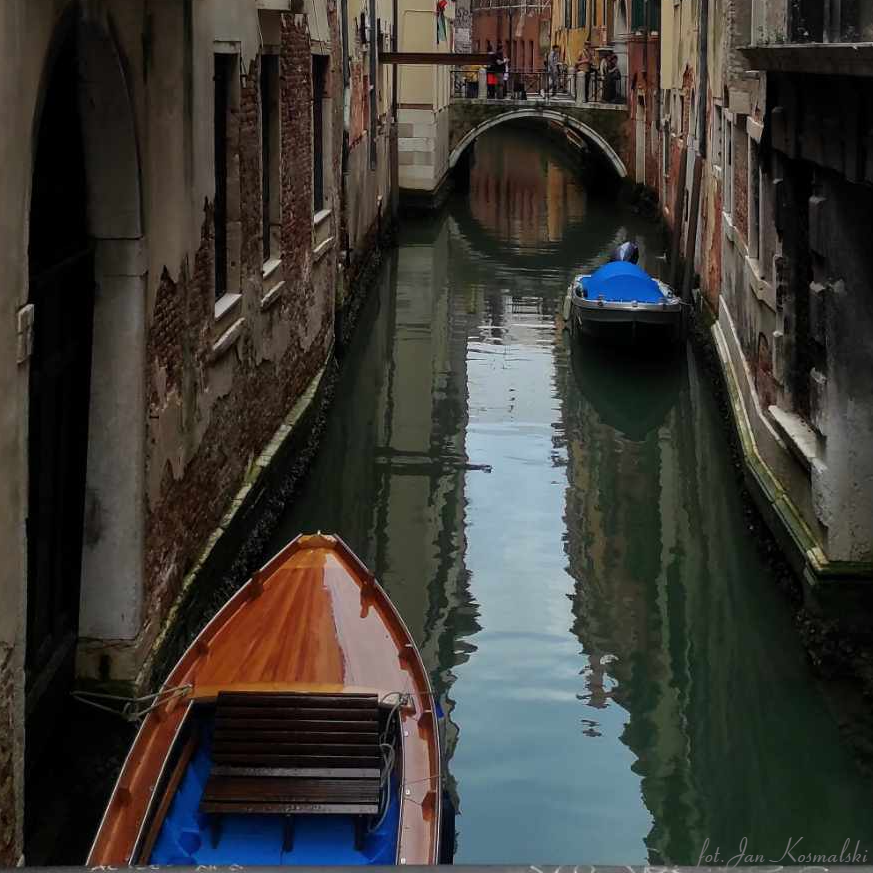
Interesting facts about Venice:
Venice has 417 bridges, of which 72 are private. The narrowest alley is only 53 cm wide and is called Calletta Varisco. There are 84 bell towers in the city, of which 3 are open for visitors.
Reflections: Applying These Practices in the Polish Context
Italian design shows that beauty and care for the environment can go hand in hand. It’s not just a trendy slogan but a daily practice—from choosing materials, through production, to making furniture and clothes that last for years. Increasingly, Italians use reclaimed wood, create furniture that’s easy to repair and recycle, and their architecture focuses on energy efficiency and greenery, like the famous Bosco Verticale in Milan.
In the Friuli Venezia Giulia region, you can see how collaboration between companies, academia, and local governments helps develop planet-friendly technologies. Programs like Superbonus demonstrate that Italy takes improving building energy efficiency seriously and encourages eco-friendly changes.
What Italians are doing can inspire Poland — showing that caring for the environment doesn’t mean giving up comfort or style. Italian design is simply a conscious approach to life worth following

